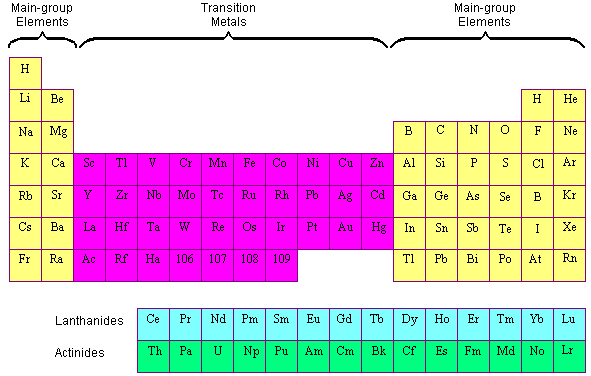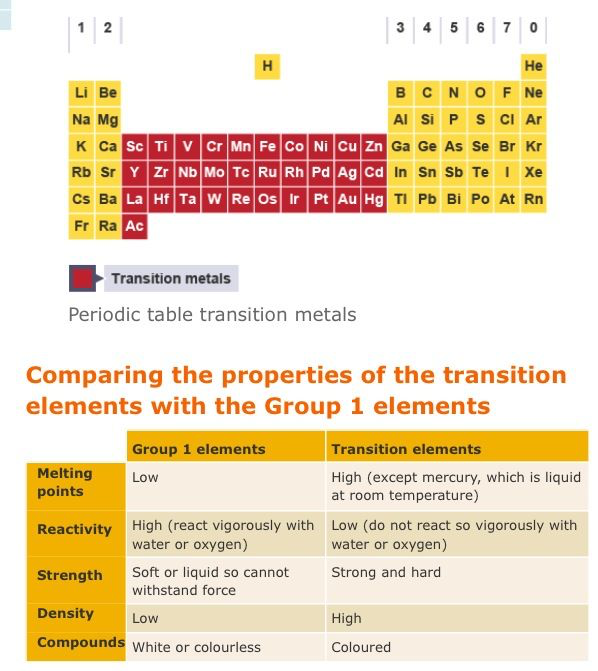Group 0 and Transition Elements
Group0Trends
What you need to know:
Which group the noble gases occupy
The general properties of noble gases.
Group 0 elements are known as the noble gases. This is because all of the element are gaseous at room temperature. The noble gases have a full outer shell of electrons, therefore they don’t tend to react much (inert). Since they don’t react much they are also non-flammable.
Properties and trends of noble gases:
- Non-flammable
- single monatomic gases
- not very reactive
Trends down group 0
Boiling points increase down the group - this is because the atomic radii increases down the group. The larger the molecules, the more intermolecular forces (see IntermolecularForces section)
Transition Elements
What you need to know:
Which groups the transition metals occupy
The general properties of transition metals.
The transition metals are the big bulk of elements in the middle of the periodic table (coloured in pink on the picture above).
These are ‘everyday’ metals.
They have the properties of metals that you would expect:
- Good conductors of heat and electricity
- Dense
- Strong
- Shiny
Note: transition metals and their compounds all make good catalysts!
Transition Metals vs Alkali Metals
What you need to know:
The main differences between transition metals and alkali metals
Even though transition metals and alkali metals are all metals, there are still quite a few differences:
- Transition metals are not as __reactive as alkali metals __(group 1 metals)
- Transition metals are much denser and stronger than alkali metals
- Transition metals have much higher melting and boiling points than alkali metals
- Alkali metals make an alkaline solution when reacted with water, transition metals do not.


